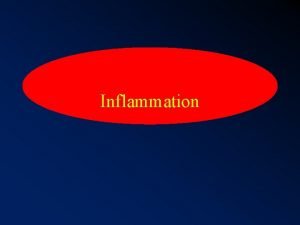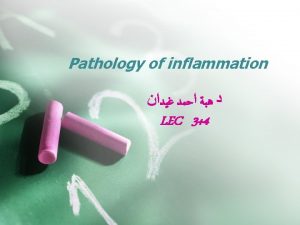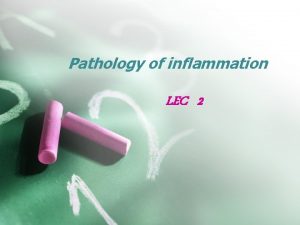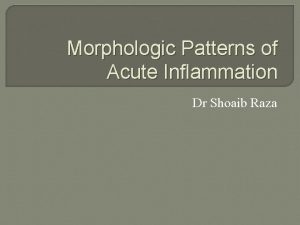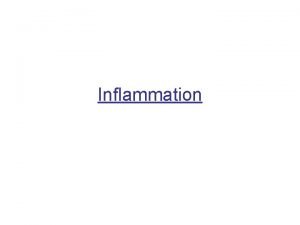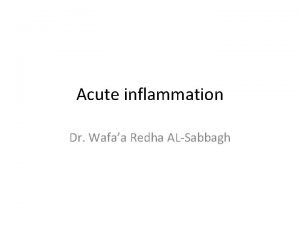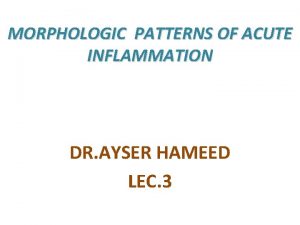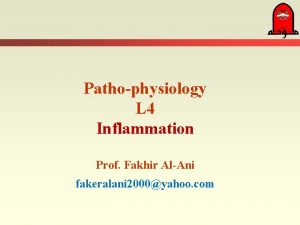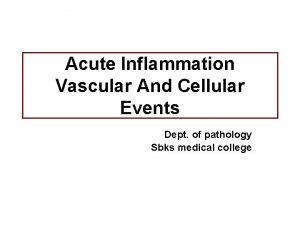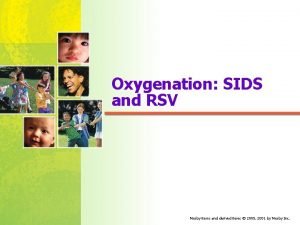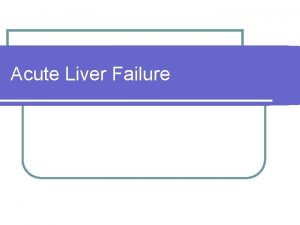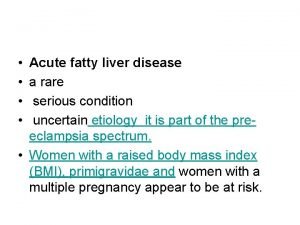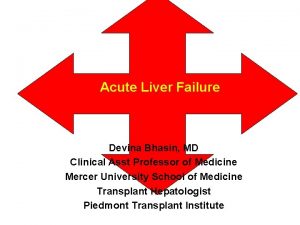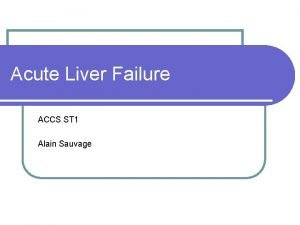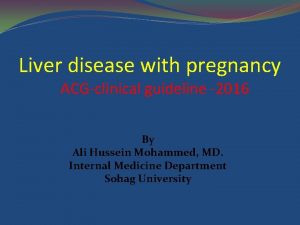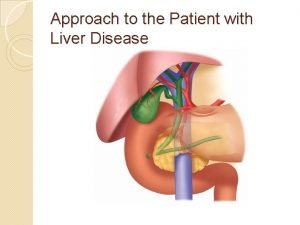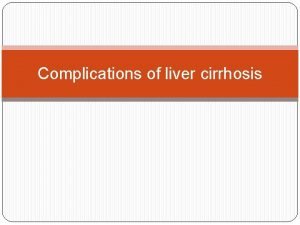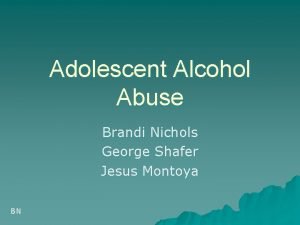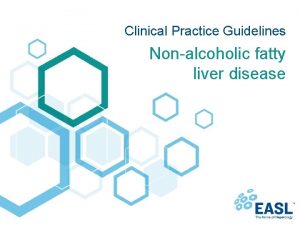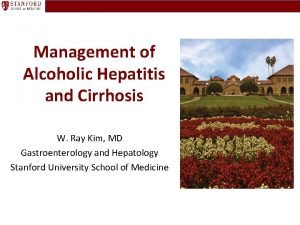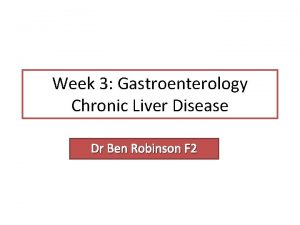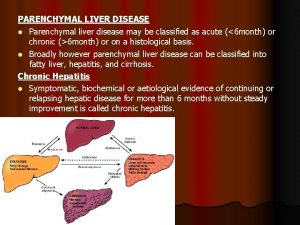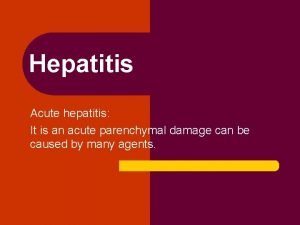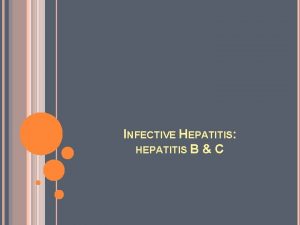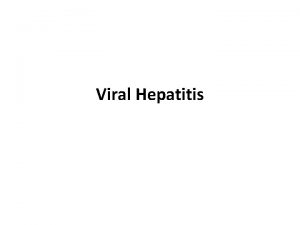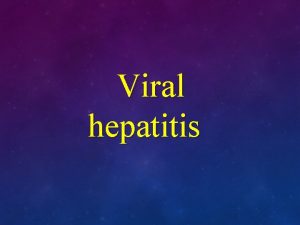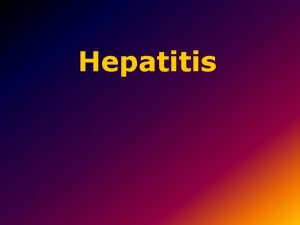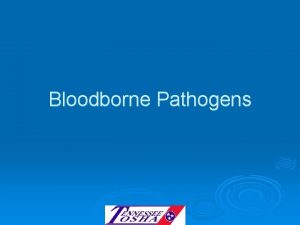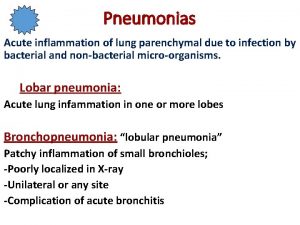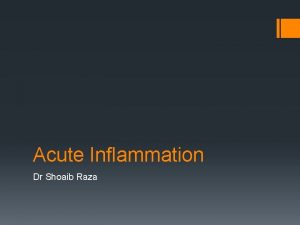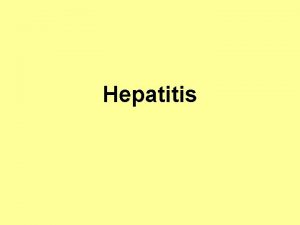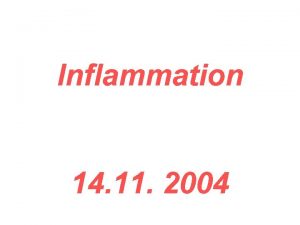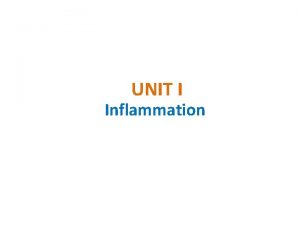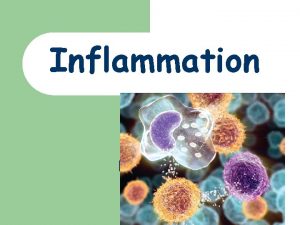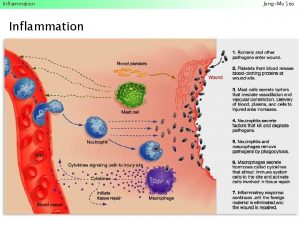Acute Parenchymal Disease of Liver Acute Hepatitis Inflammation





























- Slides: 29

Acute Parenchymal Disease of Liver Acute Hepatitis Inflammation of liver caused by various agents l Viral infections l Hepatitis A Virus l Hepatitis B Virus l Hepatitis C Virus Hepatotrophic virus l Hepatitis D Virus l Hepatitis E Virus l Cytomegalovirus l Epstein Barr virus l Herpes simplex virus Dr S Chakradhar 1

Drugs – Paracetamol, Isoniazide, Rifampicin l Alcohol Others l Pregnancy l Circulatory Insufficiency l Autoimmune Hepatitis l Wilson’s Disease l Viral hepatitis by hepatitis viruses which are hepatotrophic i. e. have a particular affinity for the liver Systemic viral infections involving the Liver Dr S Chakradhar 2

Definitions Acute viral hepatitis is defined by the sudden onset of significant aminotransferase elevation as a consequence of diffuse necroinflammatory liver injury. Chronic viral hepatitis l is defined as the presence of persistent (at least 6 months) necroinflammatory injury that can lead to cirrhosis. l (Symptomatic, biochemical, serological & histological evidence of continuing or relapsing hepatic disease for more than 6 months) l Dr S Chakradhar 3

HAV l Is a benign self limited, disease with an incubation period of 2 wks to 6 wks. l Does not cause chronic hepatitis (5% Fulminant hepatitis) l Clinical disease tends to be mild or asymptomatic and rare after childhood l Spread by ingestion of contaminated water and food and shed in stool for 2 -3 wks before and 1 week after onset of jaundice. Dr S Chakradhar 4

Fate of Acute Type A Hepatitis l 95% patient totally cure l 5% patient may develop Fulminant hepatitis Dr S Chakradhar 5

Diagnosis – Serum markers for HAV l The diagnosis of acute HAV is made by the detection of Ig. M anti. HAV antibody. (appears at onset of symptoms) l The recovery phase and immunity phase are characterized by Ig. G anti-HAV antibody. Dr S Chakradhar 6

HBV l HBV may be asymptomatic, acute hepatitis, chronic hepatitis & hepatocellular carcinoma l Incubation period is 1 -6 months l Spread principally by transfusion of blood and blood products l Sexual contact l Vertical transmission l Use of contamination needles – drug addicts etc Dr S Chakradhar 7

8 Dr S Chakradhar

9 Dr S Chakradhar

HBV - Serum markers of HBV are: Antigens l HBs. Ag - Done routinely. It appears before the onset of symptoms & peaks during overt disease in 3 – 6 months it is usually undetectable l HBc. Ag is not found in serum l HBe. Ag appears shortly after HBs. Ag in the serum Rises early & declines rapidly Its persistence is indicative of Chronic liver disease Dr S Chakradhar 10

Antibodies l Anti -HBs (Ig. G) appears after the disappearance of HBs. Ag (3 -6 months) and after vaccination. Persists for many years or perhaps permanently. Anti-HBs implies either a previous infection l Anti - HBc. Ag (Ig. M anti-HBc) - appears early and rapidly reaches a high titre which then subsides gradually. Anti-HBc is initially of Ig. M type with Ig. G appearing later. Suggests an acute & continuing viral replication l Anti-HBe usually indicates low-level replication and a lower degree of infectivity. Dr S Chakradhar 11

HCV l Is responsible for 90 -95% causes of transfusion associated hepatitis. l Incubation period 2 -26 wks l HCV has high rate of progression to chronic disease & eventually cirrhosis Dr S Chakradhar 12

13 Dr S Chakradhar

HBV - Serum markers of HBV are: l Antibodies against HCV (anti-HCV) may be undetectable for the first 8 weeks after infection. l HCV RNA can be detected serum 1 -3 weeks. l Positive tests are usually diagnostic in patients with elevated liver enzymes and with risk factors for the infection. l The antibody does not confer immunity. l It determines the presence of actual virus and ongoing infection. Dr S Chakradhar 14

HDV l It co-infects with HBV as it requires help from HBV for its replication and expression. l Mode of transmission is similar to HBV. l Incubation period – 6 -9 wks Dr S Chakradhar 15

Diagnosis l Is made by finding HDV RNA or HDV antigen in serum or liver l And by detecting antibody to the HDV antigen. Dr S Chakradhar 16

HEV l Transmitted through Faecal-oral route l Does not cause chronic hepatitis l Incubation Period 3 -8 weeks Dr S Chakradhar 17

Points Virus type Antigen HAV RNA HA Ag Antibodies Anti-HAV HBV DNA HBs Ag, HBc, Ag, HBe Ag. Anti-HBs, Anti. HBc, Anti HBe Mode of transmission Blood Uncommon Yes Faecal – oral Yes No route Sexual Contact No Yes HCV RNA HCAg HDV RNA HDAg HEV RNA HEAg Anti HCV Anti HDV Anti HEV Yes No No Yes Uncommon Yes ? No 3 -8 wks Any No No Vertical No Incubation Period 2 -6 wks Yes 2 -6 months Uncommon 2 -26 wks Yes 6 -9 wks Age Chronicity Liver cancer Young No No Any Yes (5 -10%) Yes Any Yes Yes Prevention Vaccine Hygiene Vaccine No As in HBV Dr S Chakradhar No Hygie ne 18

Dr S Chakradhar 19

Pathogenesis of Infective Hepatitis l Direct cytopathic effect l Induction of immune responses against viral antigen that damage virally infected hepatocytes. l Alteration of liver cell antigens and the initiation of an auto immune reaction. Dr S Chakradhar 20

C/F - H/O should elicit risk factors Symptoms Infection begins with a incubation period l A) Pre Icteric phase (few days to 2 wks) l Fever on and off l Anorexia, nausea, vomiting, diarrhoea l Weakness, headache, fatigue l Upper abdominal pain Dr S Chakradhar 21

C) Icteric phase l Jaundice l Stool become paler l Urine darker l Tenderness C) Post Icteric (Recovery phase) l Disappearance of jaundice l Urine and stool becomes normal l Appetite improves and GI symptoms subside Dr S Chakradhar 22

Signs l Jaundice l Tender hepatomegaly l Enlarged cervical nodes (occasionally) (Generally recovery occurs within 3 -6 wks) Dr S Chakradhar 23

Investigations l TC, DC, ESR, Hb l LFT l Serum Bilirubin - raised l Serum Aminotransferase – Very high l Serum Alkaline Phosphatase increased l Prolonged Prothrombin time l Viral markers – Anti HAV, HBs Ag Dr S Chakradhar 24

Treatment l No specific treatment, only severely affected patient require hospitalization l Bed rest (till jaundice subside) l Diet – Nutrition diet (Glucose water, sugar fruit juice, soup) with slight fat restriction. l Paracetamol is preferred anti pyretic & analgesics in low doses l Avoid drugs as far as possible especially sedatives & hypnotics l Educate patient about personal Hygiene. l Vitamin B-complex Dr S Chakradhar 25

Complications l Chronic hepatitis l Cirrhosis of liver l Fulminant hepatic failure l Hepatic coma. l Hepatocellular Carcinoma l Bleeding Disorders Dr S Chakradhar 26

Prevention of Hepatitis B l Prevention depends on avoiding risk factors such as l Sharing needles l Multiple sexual partners l Blood & blood products l 2. Immunization by hepatitis B vaccine Dr S Chakradhar 27

Chronic Viral Hepatitis /Chronic hepatitis Classification – according to extent of inflammation l Chronic persistent hepatitis – confined to portal tract l Chronic active hepatitis – spills into the parenchyma & surrounds regions of necrotic Hepatocytes Chronic lobular hepatitis – persistent inflammation is confined to the lobule Dr S Chakradhar 28

Dr S Chakradhar 29
 Sequelae of acute inflammation
Sequelae of acute inflammation Morphological patterns of acute inflammation
Morphological patterns of acute inflammation Acute inflammation
Acute inflammation Morphologic pattern of acute inflammation
Morphologic pattern of acute inflammation Granuloom long
Granuloom long Dr el sabbagh
Dr el sabbagh Purulent inflammation
Purulent inflammation Otitis media with effusion otoscopy
Otitis media with effusion otoscopy Vascular response in acute inflammation
Vascular response in acute inflammation Morphologic patterns of acute inflammation
Morphologic patterns of acute inflammation Cellular events of acute inflammation
Cellular events of acute inflammation Diabedesis
Diabedesis Cellular events of acute inflammation
Cellular events of acute inflammation Acute inflammation
Acute inflammation Cardinal features
Cardinal features Fhf
Fhf Acute fatty liver of pregnancy
Acute fatty liver of pregnancy Cushings triad
Cushings triad Lchad deficiency
Lchad deficiency Acute liver failure
Acute liver failure Acute fatty liver of pregnancy
Acute fatty liver of pregnancy Stigmata of chronic liver disease
Stigmata of chronic liver disease Why does liver disease cause splenomegaly
Why does liver disease cause splenomegaly Gennifer shafer liver disease
Gennifer shafer liver disease Stigmata of chronic liver disease
Stigmata of chronic liver disease Elisabetta bugianesi
Elisabetta bugianesi Cirrhosis
Cirrhosis Symptoms of portal hypertension
Symptoms of portal hypertension Gastroenterology board review
Gastroenterology board review Dcld vs cld
Dcld vs cld
